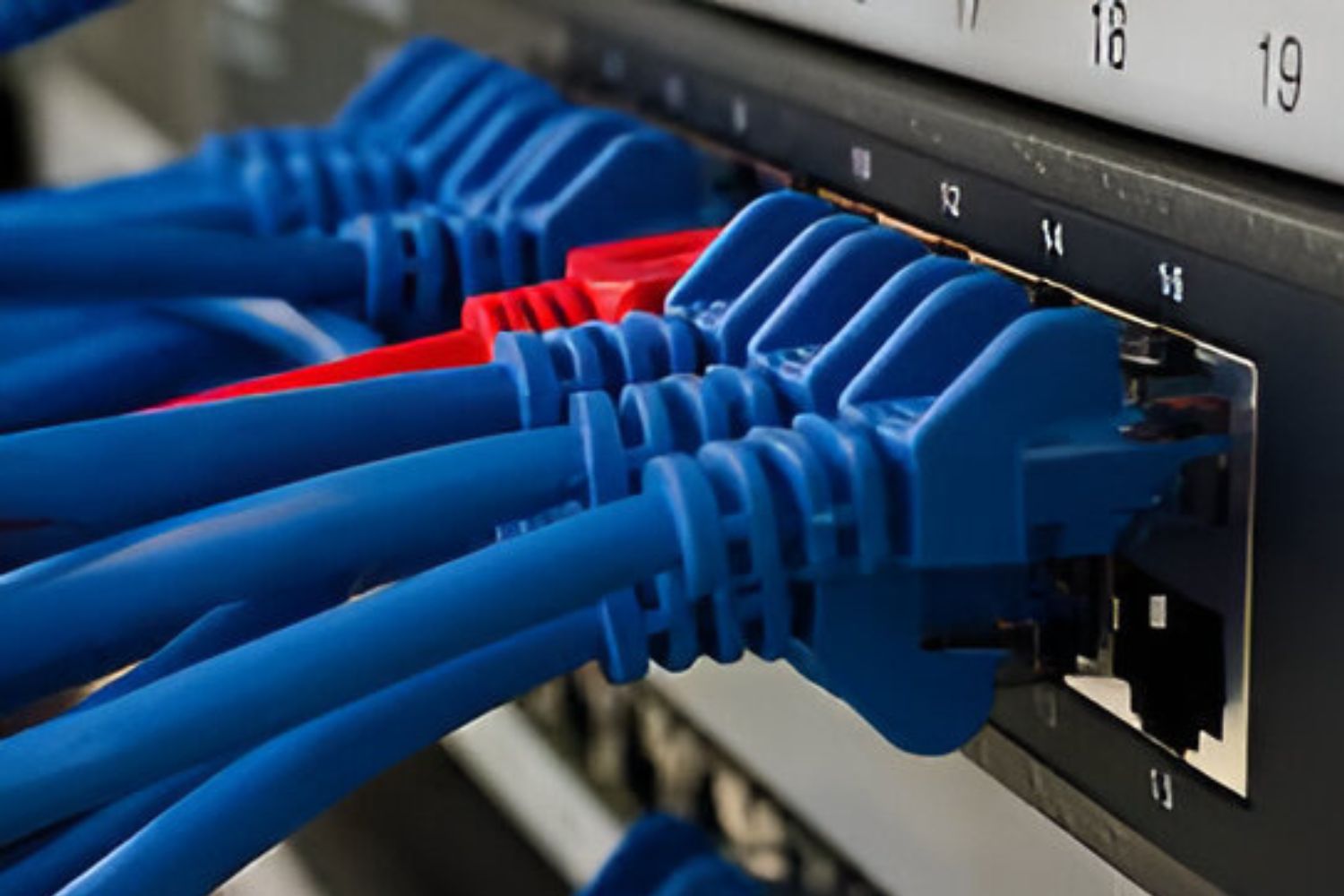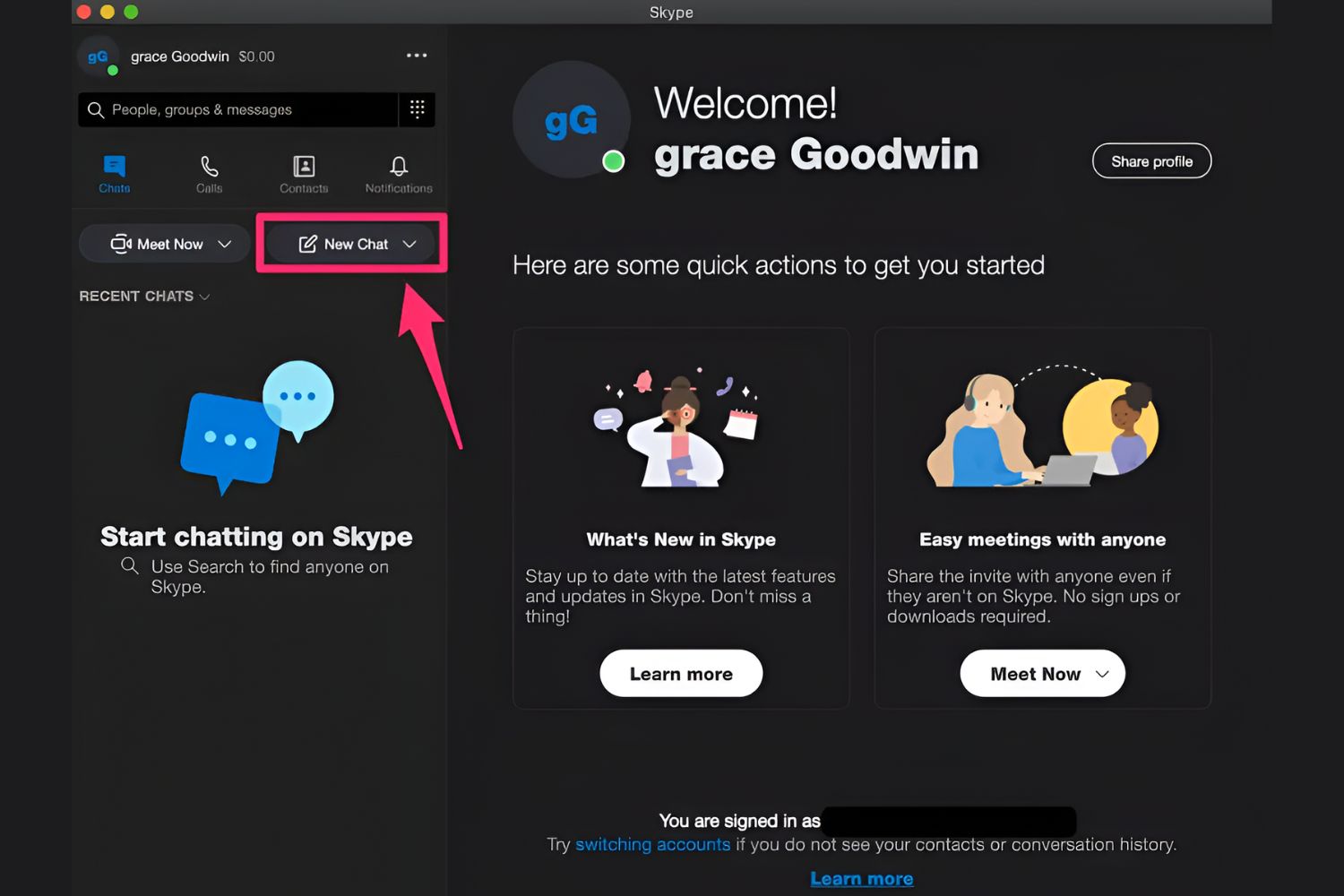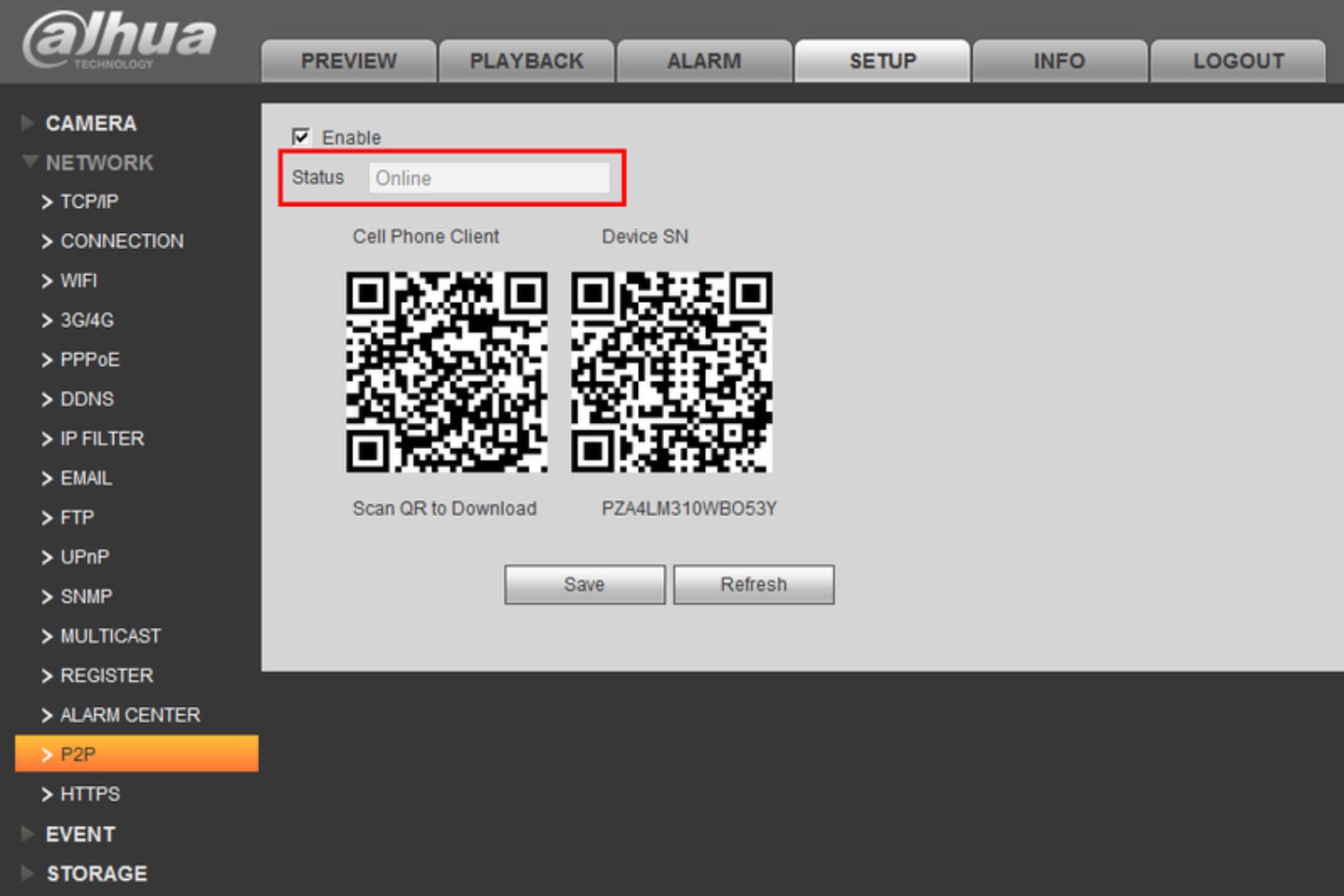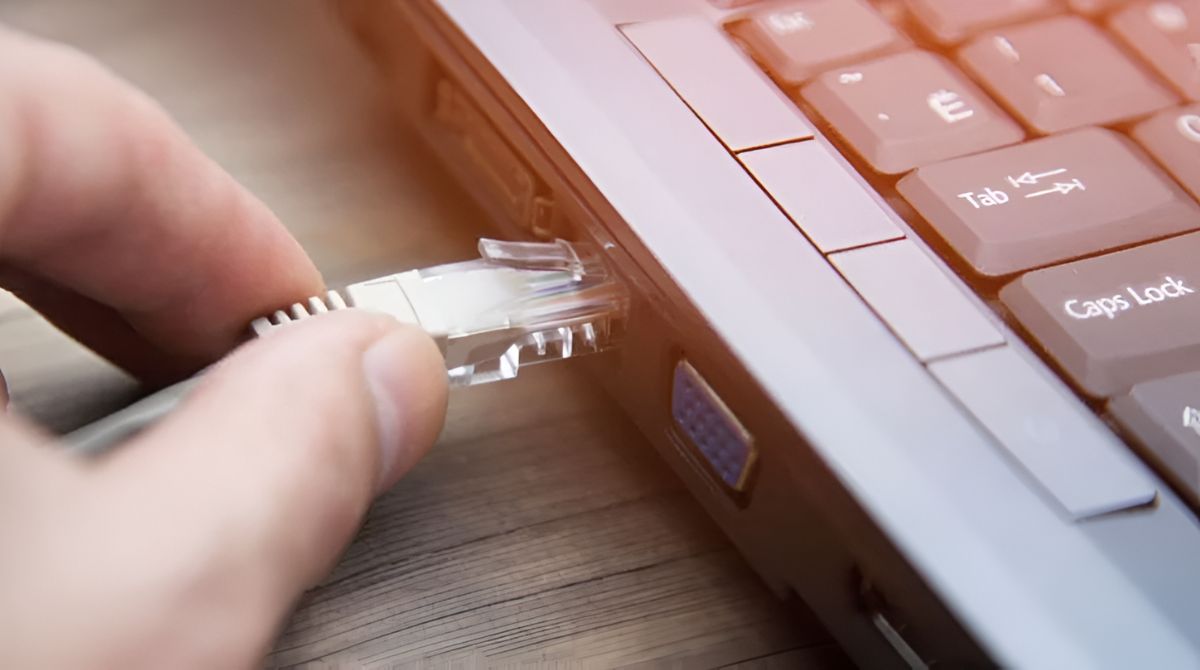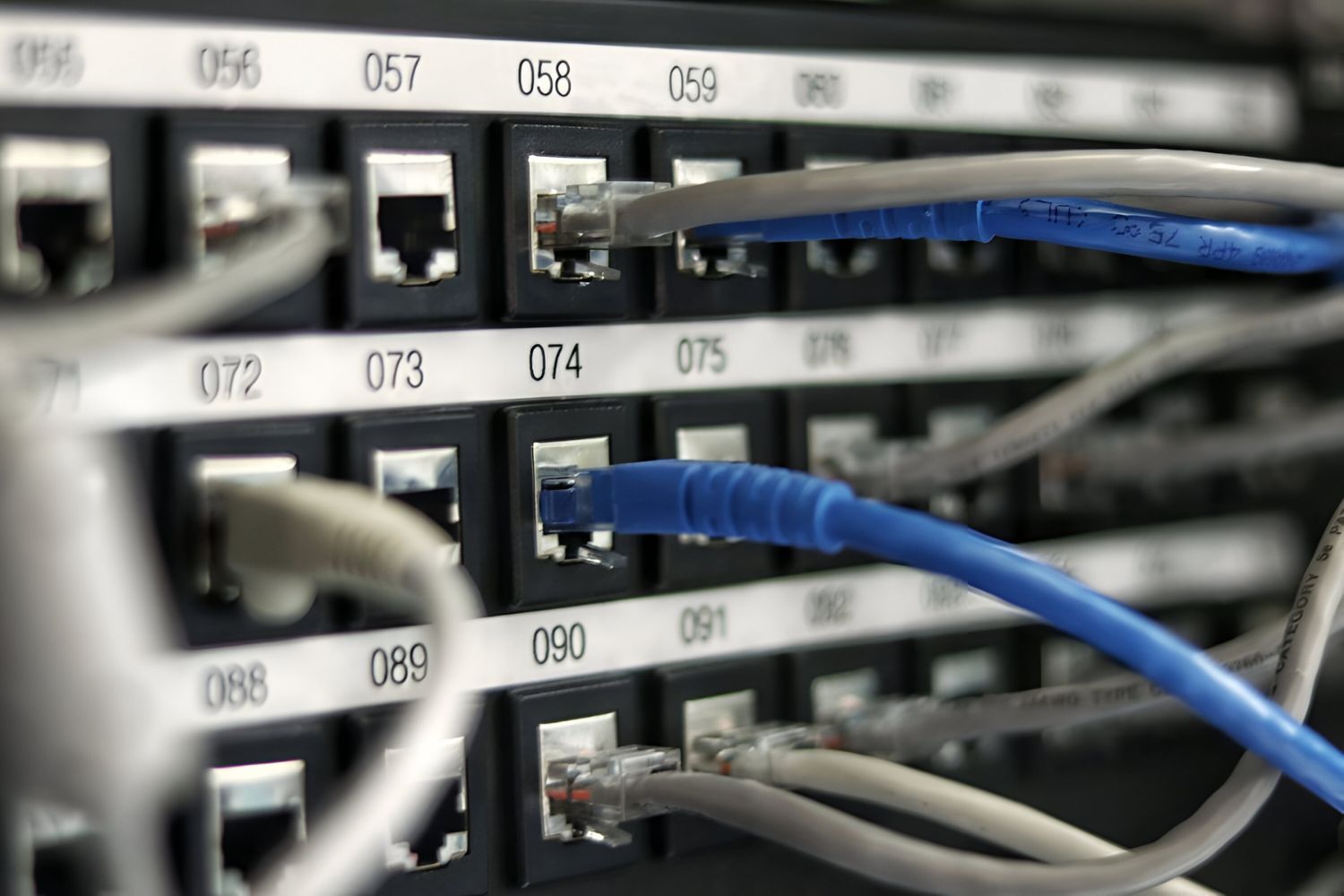Introduction
Welcome to the world of P2P connection on routers! In today’s interconnected digital era, the need for efficient and fast communication between devices has become more crucial than ever. One solution that has emerged to meet this demand is Peer-to-Peer (P2P) connection. Whether you are a tech enthusiast or a casual internet user, understanding the concept of P2P connection and its benefits can greatly enhance your networking experience.
P2P connection is a decentralized networking approach that allows devices to directly communicate with each other without the need for a central server. This innovative technology has revolutionized the way we share files, stream media, and engage in online gaming.
But how exactly does P2P connection work on a router? What are the advantages and disadvantages of using it? How can you set it up on your own router? This article will answer these questions and provide you with valuable insights into the world of P2P connection on routers.
So, get ready to dive into the world of P2P connection and unlock the true potential of your networking experience!
What is P2P Connection?
P2P connection, short for Peer-to-Peer connection, is a decentralized networking method where devices communicate directly with each other without relying on a central server. In this type of connection, devices act both as clients and servers, enabling them to directly exchange data with other devices on the network.
Traditional client-server connections rely on a central server to mediate the communication between devices. In contrast, P2P connection eliminates the need for a central authority, allowing devices to establish direct connections with one another. This means that each device in a P2P network has equal capabilities and can serve as both a receiver and a transmitter of data.
P2P connection is most commonly associated with file sharing, where users can directly share files with one another without going through a central server. Examples of popular P2P file sharing protocols include BitTorrent, eDonkey, and Gnutella.
Aside from file sharing, P2P connection is also utilized in other applications such as video and audio streaming, voice communication, and online gaming. P2P streaming allows users to watch videos or listen to music in real-time without having to download the entire file first. Voice communication applications like Skype also utilize P2P connection to enable direct voice calls between users.
Overall, P2P connection offers a more decentralized and efficient way to establish direct and secure communication between devices. By eliminating the need for a central server, P2P connection enhances privacy, reduces network traffic, and allows for faster data transfers.
How does P2P Connection Work on a Router?
P2P connection on a router involves several key steps to facilitate direct communication between devices. Let’s explore how this process works:
- Discovery: When a device wants to establish a P2P connection with another device, it needs to discover the IP address or network location of the target device. This can be achieved through various methods such as DNS lookup, local network scanning, or by querying a tracker server for P2P file sharing.
- Initiation: Once the IP address or network location of the target device is obtained, the initiating device sends a request to connect directly to the target device.
- NAT Traversal: Network Address Translation (NAT) is a technology used by routers to share a single internet connection among multiple devices. However, NAT can cause issues in establishing direct P2P connections because it assigns private IP addresses to devices behind the router. To overcome this, various NAT traversal techniques are employed, such as UPnP (Universal Plug and Play) and Port Forwarding, which allow incoming connections to bypass the router and reach the intended device.
- Authentication: Once the connection is established, the devices may need to authenticate each other to ensure the security and integrity of the communication. This can involve exchanging encryption keys or using digital certificates to establish a secure channel.
- Data Exchange: Once the P2P connection is established and authenticated, the devices can now exchange data directly with each other. This can involve sharing files, streaming media, or engaging in real-time communication, depending on the purpose of the P2P connection.
It is important to note that the specific steps and protocols involved in establishing P2P connections may vary depending on the application and network environment. Different P2P systems may employ different methods for discovery, NAT traversal, and authentication. Additionally, routers may have specific settings or requirements for enabling P2P connections, such as enabling UPnP or setting up port forwarding.
Understanding how P2P connection works on a router allows you to optimize your network settings and troubleshoot any issues that may arise. So, whether you’re sharing files or engaging in online gaming, P2P connection on your router enables direct and fast communication between devices, enhancing your networking experience.
Benefits of Using P2P Connection on a Router
P2P connection on a router offers several advantages that can greatly enhance your networking experience. Understanding these benefits can help you make the most out of your P2P connections. Here are some key advantages:
- Fast and Efficient Data Transfer: P2P connection allows for direct communication between devices, eliminating the need for data to pass through a central server. This results in faster data transfer speeds, especially when sharing large files or streaming media. With P2P connection, you can enjoy swift file transfers and seamless streaming without interruptions.
- Decentralized and Scalable: P2P connection is decentralized, meaning that there is no single point of failure. If one device fails or disconnects, the other devices can still communicate with each other. Additionally, P2P connections are scalable, allowing for the addition of more devices to the network without affecting its performance. Whether you’re sharing files with a few friends or joining a large-scale multiplayer game, P2P connection can accommodate your needs.
- Privacy and Security: P2P connection encrypts the data transmitted between devices, providing a higher level of privacy and security. Unlike traditional client-server connections where data may be stored and accessed by the central server, P2P connections are peer-to-peer, reducing the risk of data breaches. This makes P2P connection a preferred method for sharing sensitive files and engaging in secure communication.
- Reduction in Bandwidth Usage: P2P connection makes efficient use of available bandwidth by distributing the load across multiple devices. Instead of relying on a single server to send data to multiple devices, P2P connections utilize the resources of all connected devices, resulting in a more balanced distribution of network traffic. This minimizes strain on the network and ensures optimal performance for all users.
- Resilient and Robust: P2P connections have built-in redundancy, making them more resilient to network failures. Since data is shared among multiple peers, if one peer becomes unavailable, the data can still be obtained from other available peers. This ensures that the network remains functional even in the presence of device failures or network disruptions.
By leveraging the benefits of P2P connection on your router, you can enjoy fast, secure, and efficient communication between devices. Whether you’re sharing files, streaming media, or participating in online gaming, P2P connection brings numerous advantages that enhance your overall networking experience.
Drawbacks of Using P2P Connection on a Router
While P2P connection on a router offers various benefits, it is important to be aware of the potential drawbacks that may arise. Understanding these limitations can help you mitigate any issues and make informed decisions regarding your networking preferences. Here are some common drawbacks of using P2P connection on a router:
- NAT Traversal Issues: Network Address Translation (NAT) can pose challenges when establishing P2P connections. Some routers have strict NAT settings, making it difficult for devices to reach each other directly. This can result in failures or delays in establishing P2P connections. However, enabling UPnP (Universal Plug and Play) or configuring port forwarding in the router settings can help overcome these issues.
- Increased Network Traffic: P2P connections utilize the resources of all connected devices, which means that your device may be contributing to the transfer of data for other devices on the network. This can put strain on your internet connection and consume additional bandwidth. If you have limited bandwidth or a slow internet connection, this increased network traffic may negatively impact your overall internet experience.
- Security Risks: While P2P connections can offer privacy and security benefits, they can also introduce certain risks. Since P2P connections involve direct communication between devices, there is a higher potential for malicious attacks such as malware dissemination, unauthorized access, or exposure of sensitive information. It is important to take necessary precautions, such as using reliable antivirus software and keeping your devices updated with the latest security patches.
- Reliance on Peer Availability: P2P connections rely on the availability of peers to establish direct communication. If the desired peer is not online or reachable at the moment, the connection may fail. This can be especially challenging when sharing files or participating in real-time activities such as online gaming, where the presence and availability of peers are crucial for a seamless experience.
- Difficulty in Monitoring and Control: Due to the decentralized nature of P2P connections, monitoring and controlling the network activity can be more challenging compared to client-server connections. It can be harder to identify the source of network issues or track bandwidth usage on specific devices. This may require additional network management tools or configuring advanced settings on your router to gain better control over the P2P connections.
By being aware of these drawbacks, you can take proactive measures to address them and optimize your P2P connection experience on your router. Balancing the benefits and drawbacks allows you to make informed decisions based on your specific networking needs and preferences.
How to Set Up P2P Connection on Your Router
Setting up P2P connection on your router allows you to enjoy the benefits of direct communication between devices. While the specific steps may vary depending on your router model and firmware, here are some general guidelines to help you get started:
- Enable P2P Features: Check if your router has built-in P2P features or settings that need to be enabled. Some routers have specific settings for optimizing P2P connections, such as enabling UPnP (Universal Plug and Play) or configuring port forwarding.
- Update Router Firmware: Ensure that your router’s firmware is up to date. Manufacturers often release firmware updates that address security vulnerabilities and improve P2P connectivity. Check the manufacturer’s website or consult the router’s user manual for instructions on how to update the firmware.
- Configure Port Forwarding: If your router requires port forwarding for P2P connections, access the router’s settings interface (usually through a web browser) and navigate to the port forwarding section. Follow the instructions provided by the router manufacturer to configure the necessary ports for P2P traffic.
- Enable UPnP: If your router supports UPnP, ensure that it’s enabled. UPnP allows devices to automatically configure port forwarding settings, making it easier to establish P2P connections. Check the router’s settings interface for an option to enable UPnP.
- Use Reliable P2P Software: Install and configure a reliable P2P software or application on your devices. There are various P2P applications available depending on your specific needs, such as BitTorrent for file sharing or dedicated gaming software for online gaming. Make sure to use reputable software from trusted sources to minimize the risk of malware or security vulnerabilities.
- Adjust Firewall Settings: If you have a firewall enabled on your router or devices, ensure that it allows P2P traffic. Some firewalls may block P2P connections by default for security reasons. Consult the firewall settings or documentation for instructions on how to whitelist P2P traffic.
- Test the Connection: Once you have configured the necessary settings, test the P2P connection by initiating a connection with another device. Whether you’re sharing files, streaming media, or participating in online gaming, confirm that the connection is successful and the data transfer is fast and reliable.
Remember that the specific steps and settings may vary depending on your router model and firmware. It’s recommended to consult the router’s user manual or contact the manufacturer’s support for detailed instructions tailored to your specific device.
By following these guidelines, you can successfully set up P2P connection on your router and enjoy direct communication between devices, unleashing the full potential of your networking capabilities.
Common Issues and Troubleshooting Tips for P2P Connection on a Router
While P2P connection on a router offers many benefits, there can be occasional challenges that arise. Understanding some common issues and having troubleshooting tips at hand can help you overcome these obstacles and maintain a smooth P2P connection experience. Here are some common issues and troubleshooting tips:
- NAT Traversal Failure: If you are unable to establish P2P connections due to NAT traversal issues, try enabling UPnP (Universal Plug and Play) on your router. UPnP allows devices to automatically configure port forwarding settings, making it easier for P2P connections to bypass router barriers. If UPnP is not supported or didn’t resolve the issue, manually configure port forwarding in your router settings for the specific ports used by your P2P application.
- Slow Data Transfer Speed: If you experience slow data transfer speeds during P2P connections, there are a few potential solutions. First, check if there are any other bandwidth-intensive activities on your network that may be causing congestion. If so, try minimizing or limiting those activities to prioritize your P2P connection. Additionally, verify that your internet connection speed meets the requirements for efficient P2P transfers. If the issue persists, it may be worth contacting your internet service provider to ensure there are no underlying network issues affecting your speeds.
- Firewall Interference: Firewalls, both on your router and your devices, can sometimes interfere with P2P connections. Ensure that your firewall settings allow P2P traffic and haven’t blocked the necessary ports. Whitelist the P2P application or set it as an exception in the firewall settings. It is essential to strike a balance between security and P2P functionality by allowing traffic only from trusted sources.
- Insufficient Seeder Availability: In P2P file sharing applications, insufficient seeders (devices that have completed downloading the file) can result in slow or incomplete downloads. If you encounter this issue, try connecting to additional trackers or websites that offer more seeders. Be cautious about using public or untrusted trackers, as they can pose security risks. Additionally, consider joining specialized forums or communities dedicated to file sharing to improve the availability of seeders.
- Device Connectivity Issues: If P2P connections between specific devices are consistently failing, ensure that both devices have active internet connections. Check the Wi-Fi or Ethernet settings, and troubleshoot any connectivity issues on the devices themselves. Restarting the devices or resetting network settings can sometimes resolve connection problems. If you encounter persistent issues with a specific device, it may be worth updating its firmware or drivers to ensure compatibility with P2P protocols.
- Security and Privacy Concerns: While P2P connections offer benefits, they can also raise security and privacy concerns. To mitigate these risks, use reputable P2P software from trusted sources and keep it up to date with the latest security patches. Regularly scan your devices with reliable antivirus software to detect and remove any potential malware. Additionally, be cautious when downloading or sharing files online and only engage in P2P connections with trusted peers.
Troubleshooting P2P connection issues can sometimes be complex, as it depends on various factors such as your network setup, router configuration, and specific applications you are using. If you encounter persistent issues that you are unable to resolve, consider reaching out to the support resources provided by the P2P software application or consult with an IT professional for further assistance.
By being aware of common issues and implementing these troubleshooting tips, you can ensure a more stable and reliable P2P connection experience on your router.
Conclusion
In conclusion, P2P connection on a router allows for direct communication between devices, eliminating the need for a central server. This decentralized networking approach offers numerous benefits, including fast and efficient data transfer, scalability, enhanced privacy and security, reduced bandwidth usage, and a resilient network. By understanding how P2P connection works on a router and utilizing its advantages, you can optimize your networking experience for activities such as file sharing, streaming media, voice communication, and online gaming.
However, it is important to be aware of the potential drawbacks and challenges that may arise when using P2P connection. These include NAT traversal issues, increased network traffic, security risks, reliance on peer availability, and difficulty in monitoring and control. By following troubleshooting tips for common issues like NAT traversal failures, slow data transfer speeds, firewall interference, and device connectivity problems, you can overcome these obstacles and maintain a smooth P2P connection experience.
Setting up P2P connection on your router involves enabling relevant features, updating firmware, configuring port forwarding or UPnP, using reliable P2P software, and adjusting firewall settings. It’s important to follow specific guidelines provided by your router manufacturer and make necessary adjustments tailored to your network setup.
By harnessing the power of P2P connection on your router and addressing any challenges that may arise, you can enjoy fast, secure, and efficient communication between devices. Whether you’re sharing files with peers, streaming media seamlessly, engaging in online gaming with friends, or collaborating on projects, P2P connection enables a more direct and enhanced networking experience.







